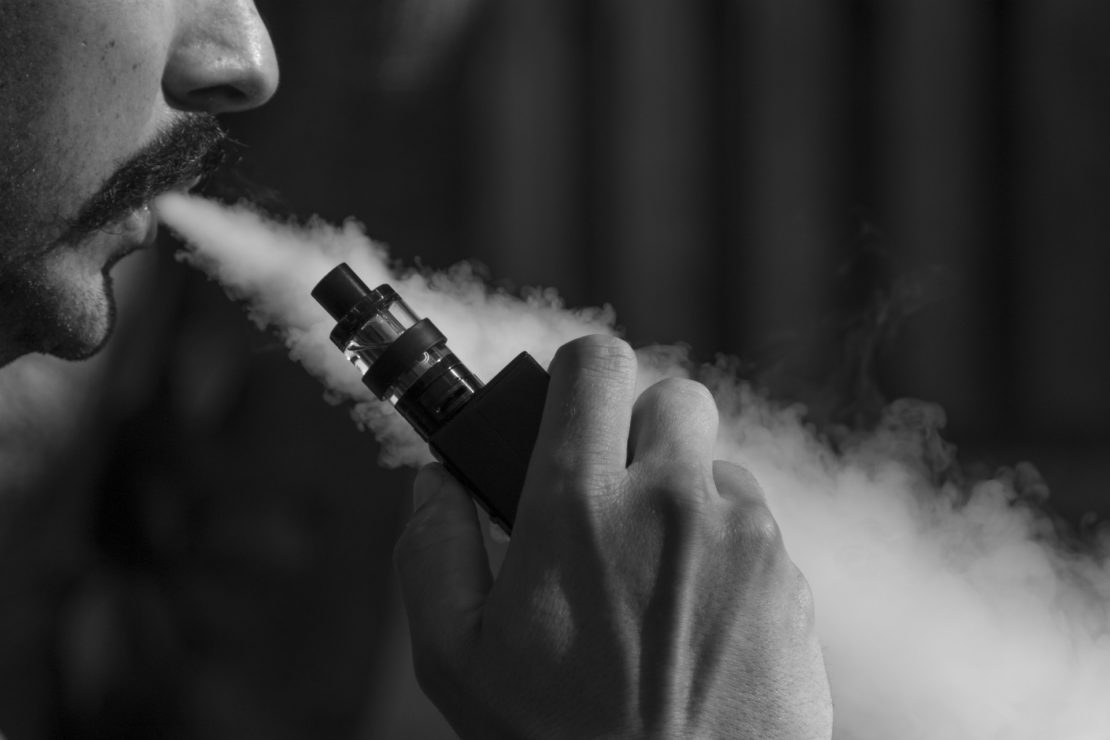Tax, nicotine cap, and flavour restrictions among actions to protect youth

While UVic students returned to campus from reading break earlier this month, the government of British Columbia announced plans to implement the toughest regulations on vaping in the country in an attempt to protect youth from the dangers of electronic cigarettes.
In a press conference, Health Minister Adrian Dix unveiled rules that included an increase in the provincial sales tax on vaping from seven to 20 per cent — making B.C. the first province with a specific tax on vaping products — caps on nicotine content, and a restriction in vaping flavours available to youth.
“In a short number of years, vaping has shifted from being a smoking-cessation tool for adults to an addictions trap for our youth,” said Dix. “Large vaping manufacturers have embraced this new technology and have used flavours and advertising to introduce a new generation of young people to very high levels of a very addictive drug, nicotine.”
Dix also cited a statistic from the British Medical Journal that reported youth vaping rates have increased 74 per cent from 2017 to 2018.
Last month, B.C. reported the province’s first case of likely vaping-caused illness — an inflammation of the lungs causing coughing, chest pain, or shortness of breath. Illness from vaping has affected more than 1 000 people in the United States, with many cases being linked to unregulated THC vaping pods, and has been tied to 26 deaths.
Elsewhere in Canada, there are three confirmed cases of severe lung illness related to vaping in Quebec, and two more probable cases in New Brunswick.
Days after the news of B.C.’s first reported vaping illness, the city of Richmond banned vaping advertisements in all public spaces.
The news comes in the wake of the federal government updating legislation last year to place tougher restrictions on vaping, including a ban on selling vaping products to youth under the age of 18. The bill also prohibited the advertising of the products to the same group, such as products with flavours such as vanilla, berry, or cotton candy.
Despite the tough restrictions on ads targeting youths, on Nov. 16, the Globe and Mail published an investigation that uncovered how e-cigarette companies are targeting young Canadians through social media, tasty flavours, and Instagram influencers.
“While much of the attention on e-cigarette promotions [has] focused on billboards, transit ads and convenience store promotions,” author Carly Weeks writes, “the Globe analysis shows that much of the marketing is happening where it’s harder to track: on computers and smartphones.”
Specifically, the investigation provided the example of Liam Gunther, an Instagram influencer who has almost 50 000 followers and posts near-daily videos of smoke tricks. Gunther, who goes by the online handle “Chufflord” and is based in Calgary, also ran a contest on his profile with vape brand Stig Canada to give away free products to followers who tagged him and the company.
In 2017, a report released by the University of Victoria’s Centre for Addictions Research of BC (CARBC) titled “Clearing the Air” outlined the harms and benefits of e-cigarettes. The report found that fears that vaping is a gateway to tobacco smoking are “unfounded,” and that it’s a good sign youth are moving away from tobacco smoking to vaping.
CARBC researchers also found strong evidence that vapour from e-cigarettes is less toxic than tobacco smoke. The team did caution, however, that some vapour devices could contain dangerous levels of metals and other harmful materials.
In a follow-up interview with the Martlet, Dr. Majorie MacDonald, UVic Professor and principal investigator in the 2017 report, said the amount of nicotine present in vapes has changed since the original report was published and that she supports B.C.’s new regulatory measures.
“When we first issued our ‘Clearing the Air’ report, nicotine-infused vaping liquids were not legal in Canada and many of the young people who reported vaping were not using nicotine,” said MacDonald.
“Although it was possible for young people to obtain nicotine-infused vaping liquids back then, most did not and, in fact, many reported that they did not want to be vaping nicotine. The field has changed considerably since then, now that nicotine liquids are legally available. It is for this reason that strict regulation of access for youth is so important, and the reason I support B.C.’s new regulatory measures.”
MacDonald also mentioned how a 2016/17 Canadian Student Tobacco, Alcohol and Drugs survey (CSTADS) report — for which she is the lead B.C. researcher — highlighted the increase of vaping among youth, and expects another increase when Health Canada releases the 2018-19 survey results.
“I make a clear distinction between vaping by adults for the purposes of smoking cessation, and vaping by youth. Strong regulation is important to limit use by youth, so I am supportive of the B.C. government’s announcement of taxes, capping nicotine content, and flavour restrictions. These strategies have been very effective in the war against smoking by youth, so may potentially have an impact on curbing vaping by youth.”
If legislation passes in B.C., the new vaping rules would come into effect next year.








